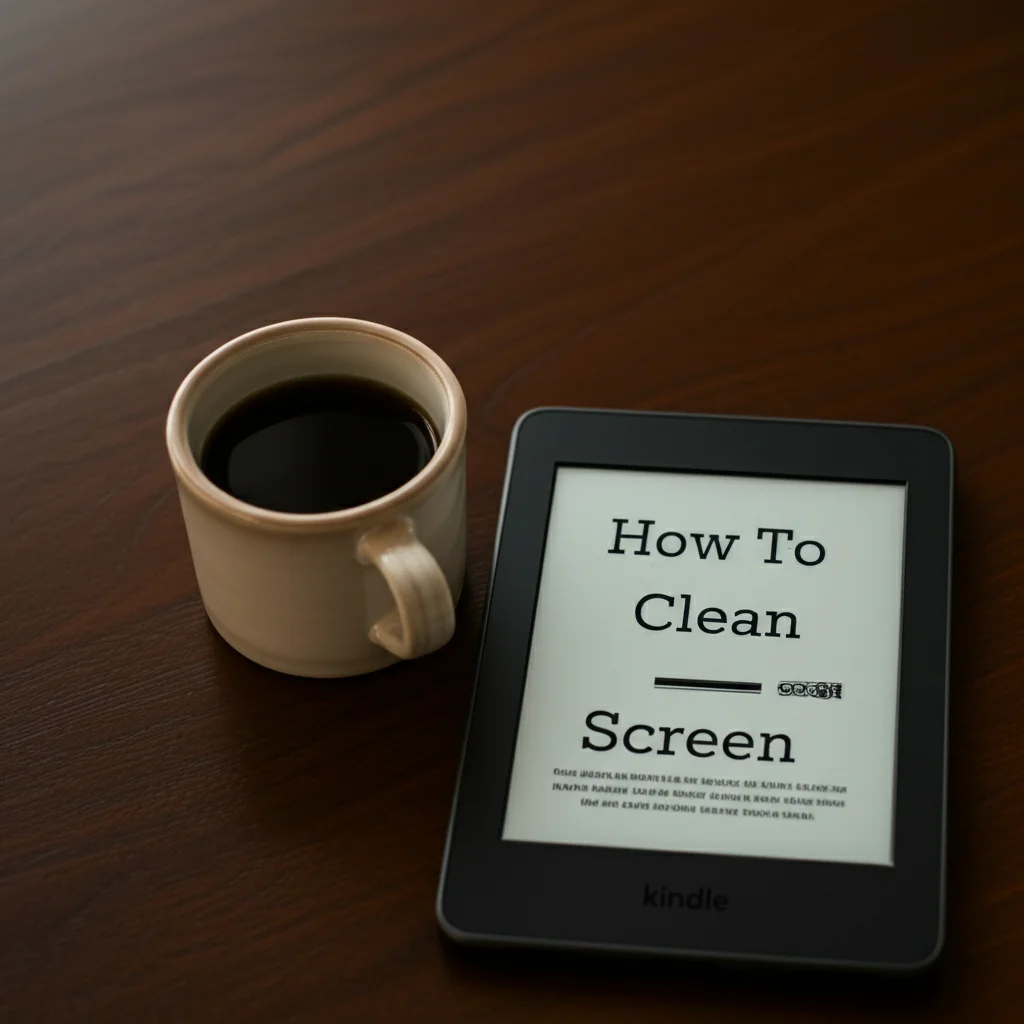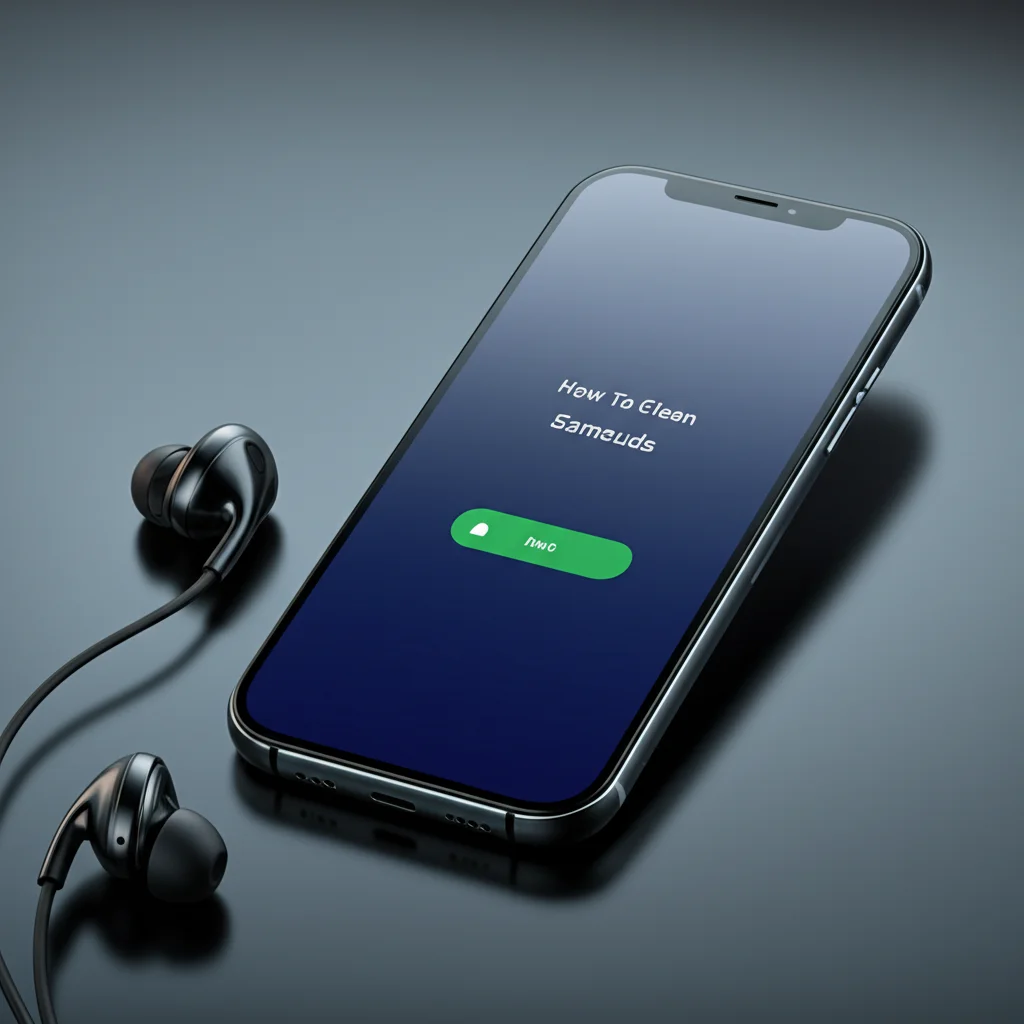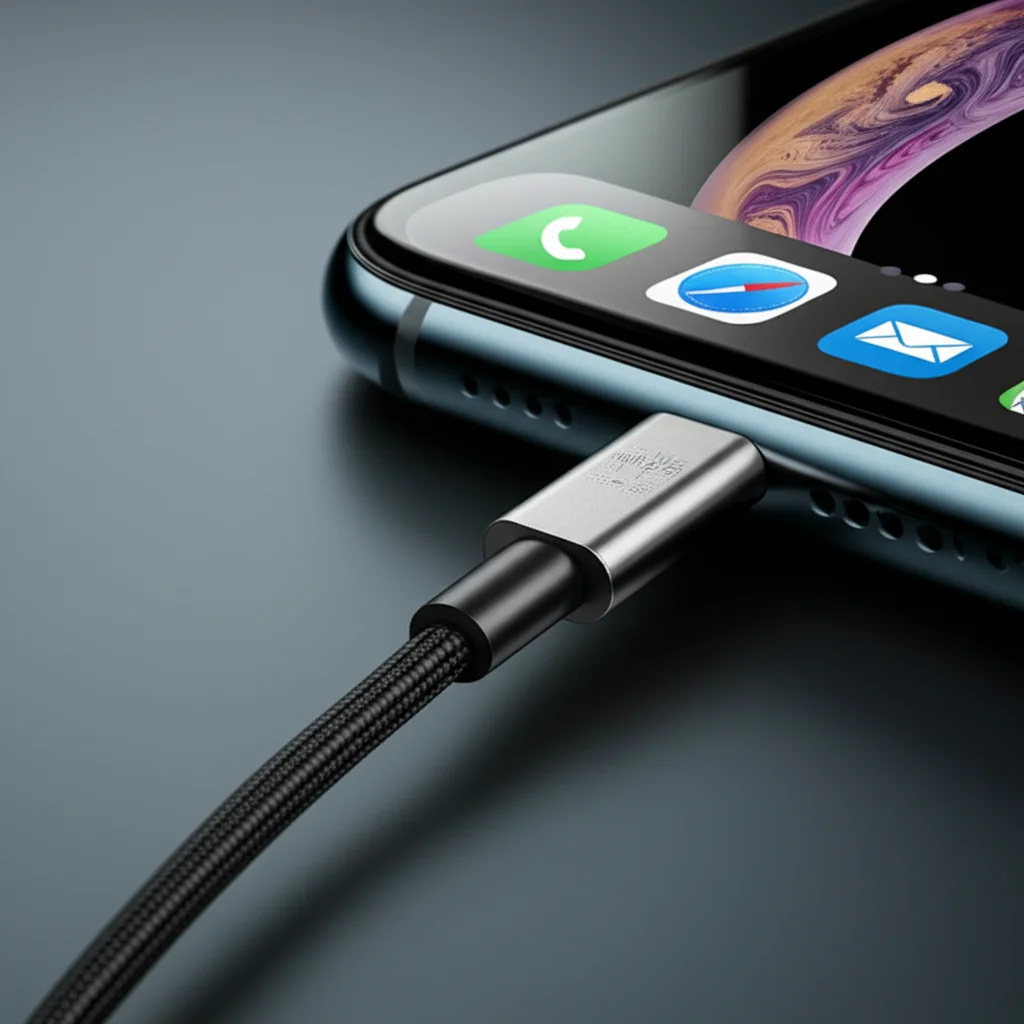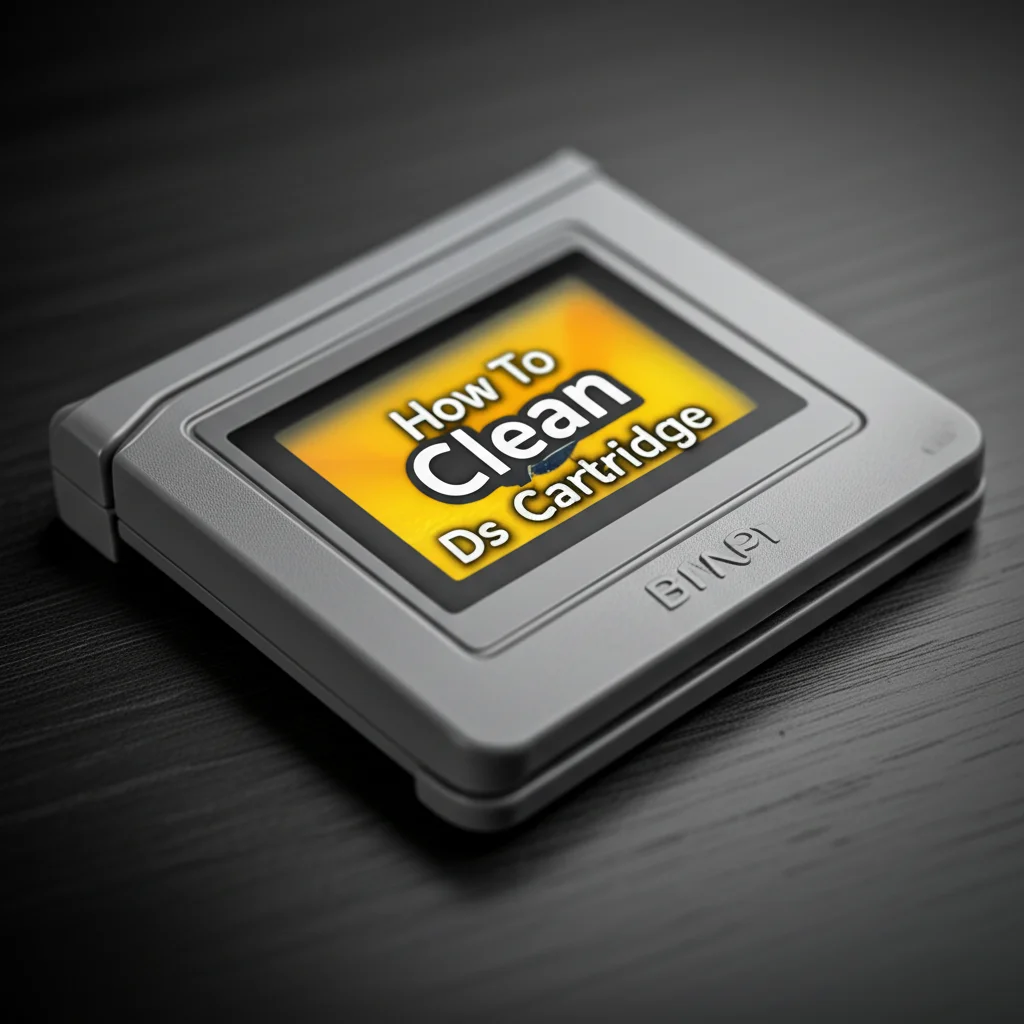· Todd Martin · Electronics Maintenance · 12 min read
How To Clean Kindle Screen

How To Clean Your Kindle Screen Safely and Effectively
A clear screen makes reading on your Kindle a joy. Dust, smudges, and fingerprints appear on electronic displays quickly. Knowing how to clean Kindle screen properly ensures clear text and a healthy device. Many people wonder about the best methods for this specific e-reader. I will guide you through the safe ways to keep your Kindle display spotless. This guide covers essential tools, step-by-step instructions, and vital care tips.
Takeaway
Keeping your Kindle screen pristine is simple with the right approach.
- Always use a dry, soft microfiber cloth for daily cleaning.
- Turn off your Kindle before you start cleaning.
- Avoid harsh chemicals, abrasive materials, or excessive liquid.
- For stubborn marks, use a very lightly damp cloth with distilled water.
- Protect your screen with a case or screen protector to minimize future dirt.
Cleaning your Kindle screen involves gentle wiping with a dry microfiber cloth. For persistent smudges, dampen the cloth with distilled water lightly. Power off the device first and avoid direct liquid application. This method keeps your e-ink display clear and safe from damage.
Understanding Your Kindle Screen: E-Ink Technology
Kindle devices use e-ink screens, which differ greatly from phone or tablet displays. These screens create images using tiny charged particles. This technology mimics the look of real paper. It provides a comfortable reading experience.
What Makes E-Ink Unique?
E-ink screens do not emit light directly. They reflect ambient light, just like a book page. This design helps reduce eye strain during long reading sessions. It also contributes to very long battery life. Unlike LCDs, e-ink displays hold an image without constant power use.
The surface of an e-ink screen is often less glossy than LCDs. This non-glossy finish can sometimes feel different to touch. It also requires a gentle cleaning approach. Understanding this distinction helps you avoid damaging your beloved e-reader. We must treat these screens with specific care.
Why Special Care Is Needed
Traditional screen cleaners often contain harsh chemicals. These chemicals can damage the delicate e-ink surface. They might strip coatings or leave permanent streaks. Using too much liquid also poses a risk. Moisture can seep into the device, harming internal components.
Abrasive materials like paper towels or rough cloths can scratch the screen. Even tiny particles of dust can cause micro-scratches if wiped incorrectly. Because of these factors, a soft, lint-free cloth and minimal moisture are vital. This careful approach helps keep your Kindle screen clear and functional for years. Protecting your device from damage ensures its longevity.
Gathering Your Kindle Screen Cleaning Supplies
Having the correct tools makes cleaning your Kindle screen easy and safe. You do not need many items. The right supplies ensure you clean the screen without causing any harm. Always gather your materials before you begin the cleaning process. This preparation saves time and prevents interruptions.
Essential Cleaning Tools
You only need a few simple things. A high-quality microfiber cloth is the most important item. These cloths are soft and lint-free. They effectively pick up dust and oils without scratching surfaces. You might also need distilled water for tougher smudges. Distilled water lacks minerals found in tap water. These minerals can leave residue or streaks on screens.
Always make sure your microfiber cloth is clean. A dirty cloth can transfer grime or even scratch your screen. Wash microfiber cloths separately and avoid fabric softeners. Fabric softener can reduce their effectiveness. A small spray bottle is optional if you plan to use water. It helps apply a fine mist to the cloth, not directly to the screen.
What To Absolutely Avoid
Some common cleaning products are harmful to Kindle screens. Never use window cleaners, ammonia-based solutions, or alcohol-based wipes. These chemicals can damage the screen’s finish. They can also degrade the plastic housing. Acetone, bleach, and abrasive cleaners are also off-limits. These substances will cause irreversible damage.
Avoid paper towels, tissues, or rough cloths. These materials can scratch the screen. They often leave lint behind too. Never spray water or cleaning solutions directly onto your Kindle. Liquid can get into the device’s interior. This causes electrical damage. A gentle approach with the correct tools protects your Kindle. Proper care keeps your screen looking new.
Step-by-Step Guide: How to Clean Light Smudges
Cleaning light smudges and dust from your Kindle screen is a quick task. This routine cleaning prevents dirt buildup. It keeps your reading experience clear and pleasant. Follow these simple steps for safe and effective cleaning. I always start with the simplest method first.
Preparing Your Device
Before you touch the screen, power off your Kindle. This step prevents accidental presses. It also helps you see smudges clearly against a dark screen. Unplug any charging cables or accessories. Make sure your hands are clean and dry. Oily or dirty hands can transfer more grime to the screen.
Place your Kindle on a flat, stable surface. A soft towel underneath can prevent scratches on the device’s back. This setup makes the cleaning process easier. It also minimizes the chance of dropping your Kindle. Preparing the device properly is the first safety measure.
Gentle Wiping Techniques
Take your clean, dry microfiber cloth. Start wiping the screen with light pressure. Use a circular motion or wipe in straight lines. Begin from one corner and move across the entire screen. The goal is to lift dust and smudges, not to rub them in.
For light dust, a single pass often suffices. For minor smudges, you might need a few gentle passes. Do not press hard. Excessive pressure can damage the screen or internal components. This gentle technique helps remove surface dirt. It leaves your screen clear and streak-free. This method is similar to how you might clean a cell phone screen or clean a laptop screen for daily maintenance.
Tackling Stubborn Marks and Grime on Your Kindle
Sometimes, a dry wipe is not enough. Fingerprints, oils, or sticky residues require a bit more effort. Do not worry; you can remove these marks safely. The key is to introduce moisture very carefully. This section explains how to handle tougher grime.
Using a Slightly Damp Cloth
For stubborn marks, you will use distilled water. First, get your clean microfiber cloth. Lightly dampen a small section of the cloth with distilled water. It should be barely damp, not wet. The cloth should not drip any water. Wring out any excess moisture thoroughly.
Use this slightly damp part of the cloth to gently wipe the stubborn area. Use light, circular motions. Avoid spreading the grime around. Once the mark is gone, immediately use a dry part of the microfiber cloth. Gently wipe the area again to dry it completely. This prevents water spots or streaks.
Addressing Fingerprints and Oils
Fingerprints are common on Kindle screens, especially if they are touch-enabled. These marks come from natural skin oils. A dry microfiber cloth often removes light fingerprints. For oily smudges, the slightly damp cloth method works best. The tiny amount of distilled water helps dissolve the oil.
Always wipe in one direction when removing oils. Then, use a dry section to buff the screen. This technique lifts the oil without leaving smears. Remember to clean your microfiber cloth regularly. A cloth saturated with oil will not clean effectively. Cleaning your Kindle screen for fingerprints is similar to how you would clean fingerprints off a TV screen or clean a mobile phone touch screen. Both devices benefit from gentle care to maintain clarity.
Kindle Screen Care: Protecting Against Scratches and Damage
Preventing damage is always better than cleaning or repairing it. A well-protected Kindle screen stays clear longer. It also reduces the need for frequent deep cleaning. Taking proactive steps can extend your Kindle’s life. I always recommend protective measures for any electronic device.
Best Practices for Screen Longevity
Always handle your Kindle with care. Avoid placing it face down on rough surfaces. Keep it away from sharp objects like keys or pens. Store your Kindle in a dedicated sleeve or case when not in use. A good case protects both the screen and the body of the device.
Keep your Kindle away from extreme temperatures. High heat can damage the screen. Cold temperatures can also affect performance. Avoid direct sunlight for long periods. Regular, gentle cleaning also contributes to longevity. It prevents abrasive particles from accumulating.
Choosing the Right Screen Protector
A screen protector adds an extra layer of defense. Many types are available for Kindle devices. Some are clear films, while others are tempered glass. Choose a protector specifically designed for your Kindle model. This ensures a proper fit.
Matte screen protectors can reduce glare. They might slightly alter the screen’s appearance. Clear protectors offer invisible protection. Installing a screen protector correctly prevents bubbles and dust. Follow the manufacturer’s instructions carefully. A screen protector can make future cleaning even easier. Knowing how to clean a sticky side of a screen protector or even how to clean an iPhone screen protector can be helpful knowledge. These tips can apply to your Kindle’s protector as well.
Common Mistakes to Avoid When Cleaning Kindle Screens
Making mistakes during cleaning can harm your Kindle. Some common cleaning habits for other items are not suitable for e-readers. Knowing what to avoid is as important as knowing what to do. I have seen many devices damaged by incorrect cleaning.
Harsh Chemicals and Abrasive Materials
Never use household cleaners on your Kindle screen. Products like window cleaner, kitchen sprays, or furniture polish contain harsh chemicals. These can strip the anti-glare coating or cause permanent haziness. They might also react with the plastic, leading to discoloration.
Abrasive materials like paper towels, tissues, or rough cloths create scratches. Even small scratches can impair readability. Always use a soft, lint-free microfiber cloth. This type of cloth is gentle on sensitive surfaces. It is designed to trap dust without leaving marks.
Excessive Moisture Risks
Applying too much liquid is a major risk for electronics. Never spray water or any cleaning solution directly onto your Kindle screen. Liquid can seep into the device through small gaps. This can short-circuit internal components. Water damage is often irreversible and voids warranties.
When using a damp cloth, ensure it is only slightly moist. Wring out all excess water thoroughly. The cloth should feel barely damp to the touch. Immediately follow up with a dry cloth to absorb any remaining moisture. This prevents water spots and ensures no liquid enters the device. Exercise extreme caution with any liquids near your Kindle.
Maintaining Your Kindle’s Clarity: Regular Cleaning Habits
Regular maintenance keeps your Kindle screen in top condition. It prevents dirt from building up. Consistent, gentle cleaning makes deep cleaning less necessary. Establishing a routine helps ensure a crisp reading experience every time. I find that a little effort often saves a lot of trouble.
Daily Wipes for a Clear View
A quick daily wipe can make a big difference. After each reading session, take a dry microfiber cloth. Gently wipe down the screen to remove any fresh fingerprints or dust. This takes only a few seconds. It stops particles from settling and bonding to the surface.
This habit is especially useful if you read in dusty environments. It also helps if you often touch the screen. A quick pass ensures the display remains clear for your next book. This simple step keeps your Kindle looking its best daily.
Deep Cleaning Schedule
While daily wipes handle surface dust, a periodic deep clean is beneficial. Plan a deeper cleaning session once a month or every few weeks. This schedule helps remove any accumulated oils or stubborn smudges. Use the slightly damp microfiber cloth method described earlier.
Adjust the frequency based on your usage. If you use your Kindle constantly, you might clean it more often. If it stays mostly in a case, less frequent deep cleaning is fine. A consistent cleaning schedule maintains screen clarity. It prolongs the life of your device. Proper maintenance makes sure your Kindle always provides a pleasant reading experience.
Frequently Asked Questions
Can I use alcohol to clean my Kindle screen?
No, do not use alcohol to clean your Kindle screen. Alcohol-based cleaners can damage the e-ink display’s sensitive coating. They may cause haziness, streaks, or discoloration over time. Stick to a dry or slightly damp microfiber cloth with distilled water. This prevents damage and maintains screen quality.
How often should I clean my Kindle screen?
Clean your Kindle screen daily with a dry microfiber cloth for light dust and fingerprints. For deeper cleaning of smudges and oils, once a month or every few weeks is sufficient. Adjust frequency based on how often you use your Kindle and how dirty it gets.
What if my Kindle screen has scratches?
Unfortunately, cleaning cannot remove physical scratches. If your Kindle screen has scratches, a screen protector might help conceal minor ones. It also prevents new scratches. For severe scratches, professional repair might be an option, but it can be costly. Prevention is always best.
Can I use water directly on my Kindle screen?
No, never spray water or any liquid directly onto your Kindle screen. This risks moisture seeping into the device’s electronics, causing damage. Always apply a very small amount of distilled water to a microfiber cloth first, then gently wipe the screen. The cloth should be barely damp.
Is a screen protector helpful for cleaning?
Yes, a screen protector can be very helpful for cleaning. It provides a durable, easy-to-clean surface that protects the original screen. Smudges and fingerprints are easier to wipe off a protector. If the protector gets too damaged, you can replace it without harming the Kindle screen itself.
What is the safest way to remove fingerprints?
The safest way to remove fingerprints from your Kindle screen is to gently wipe them with a clean, dry microfiber cloth. For stubborn, oily fingerprints, lightly dampen a section of the microfiber cloth with distilled water. Wipe the area, then immediately dry it with another clean, dry section of the cloth.
Conclusion
Keeping your Kindle screen clean makes reading enjoyable. We discussed how to clean Kindle screen effectively and safely. You learned about the unique e-ink technology. You know which supplies you need and which ones to avoid. Gentle wiping with a microfiber cloth handles most dirt. For stubborn marks, a slightly damp cloth with distilled water works wonders.
Remember to prepare your device by powering it off. Always use light pressure. Protecting your Kindle with a case or screen protector helps prevent future damage. Avoiding harsh chemicals and excessive moisture is critical. Regular, simple cleaning habits maintain clarity and prolong device life. A clean screen means endless reading enjoyment. Keep your Kindle spotless and ready for your next adventure.





